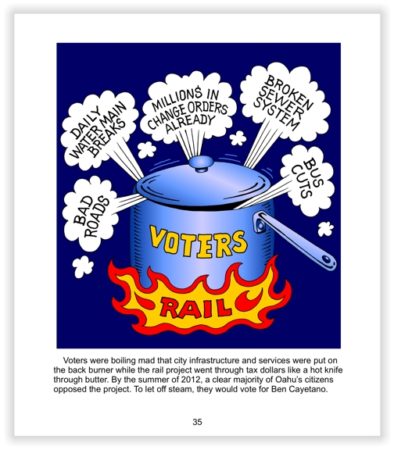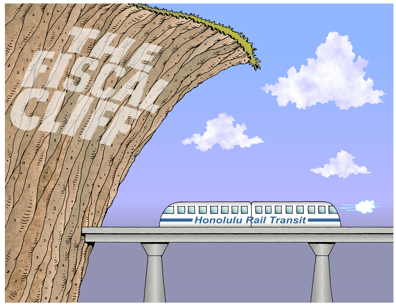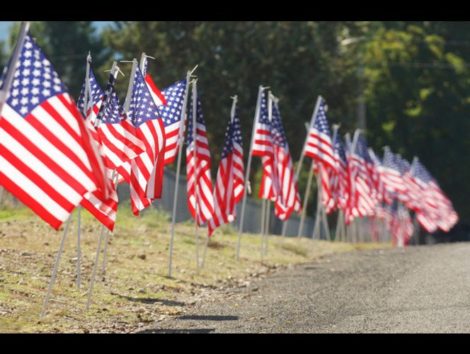Here’s Why These Rookie Candidates Decided To Get Into Politics
This year’s newcomers come from all over the political spectrum, and a variety of issues inspired them to run.
Why would anyone want to enter politics in today’s hyper-polarized environment? Seeking public offices to offer solutions and honest service is severely needed in our democracy! Not every one is into that political pool of polarization and name-calling. Being hyper-polarized is not conducive to our democracy. I’m happy that there are candidates who focus on issues/solutions in a civil and thoughtful manner.
Civil Beat set out to answer that question by interviewing eight candidates who hadn’t run for elected office before this year. They said they were lured by issues like Hawaii’s high cost of living, climate change, a desire for lower taxes and the need for more efficient and transparent government. Yes!
And while those are subjects longtime politicians frequently cite as well, new blood might be the key to actually addressing them, some newcomers say. I submit that insanity is doing the same thing over and over again and expecting different results. Are you happy with the direction Oahu is heading? Longtime politicians and bureaucrats had their chances, what have they done?

Zack Stoddard, a 31-year-old City Council candidate, works as a city planner.
Cory Lum/Civil Beat
Anti-abortion candidate Andrew Kayes, a nonpartisan candidate for the state House seat that covers the greater Kahului area, decided to pull papers after the Legislature passed a bill to legalize medical aid in dying, which he opposes.
Others say politicians have stopped listening to the constituents who elected them.
“I’ve just been frustrated with politicians and how they don’t seem to really care at all about working-class people,” said Zack Stoddard, a candidate for Honolulu City Council District 6 that stretches from Makiki to Kalihi. “That’s essentially the number one thing I hear from people.”
Stoddard isn’t a total stranger to local politics. Last year he was appointed to the neighborhood board for the Nuuanu and Punchbowl areas. He volunteered to fill a vacancy for the seat that represents his community during the first board meeting he attended.
He decided to run for the City Council after the District 6 incumbent, Carol Fukunaga, killed a bill to ban styrofoam food containers.
Stoddard said he was concerned about the influence of money in politics. He was one of a few new candidates interviewed by Civil Beat who said they are declining donations and paying their own way.
But Tina Wildberger, a progressive socialist Democrat who’s running to represent the state House seat district that covers Kihei to Wailea-Makena, has a different philosophy about campaign finance.
“I feel like if the people that know about me, care about me, and the people in my community don’t want to support my campaign, I don’t have any business being in that office,” she said.
Wildberger, who advocated for environmental issues and managed Kelly King’s successful campaign for a Maui County Council post, said her run was partly inspired by the #MeToo movement, the Parkland, Florida, school shootings and women’s marches.
In a way, Wildberger got in the race by accident. She had approached Rep. Kaniela Ing, a congressional candidate who will soon vacate the district Wildberger is running to represent, to pick his brain. Wildberger was still weighing a run when she got a call from a reporter who said Ing had endorsed her.
“If we were not experiencing the systematic dismantling of our democratic and environmental protections and protections against women … I don’t know that I would’ve been motivated this much to run,” she said.
Fresh Faces
Some other first-time candidates got into their races without any political experience.
Kelly Kitashima, a candidate running to represent Honolulu City Council District 8 that spans Aiea, Pearl City and Waipahu, became politically engaged when she was promoted to higher management at the hotel where she worked. She opposed efforts to increase taxes on the state’s tourism industry and began submitting testimony to officials.
Kitashima said she found a council run appealing because the office handles topics such as rail, infrastructure and property taxes — issues that affect people’s everyday lives.

Kitashima, whose kids play sports, was frustrated with the state of local fields.
“I am a mom, and I know it sounds so repetitive, but I’m just deathly afraid that my kids won’t be able to live here,” Kitashima said. “It kind of felt like I had to roll up my sleeves and step up.”
Kitashima, a self-described “local girl,” said she started tuning into politics when Donald Trump became president.
“I definitely would say I became a little bit more vigilant that year,” she said, adding there was “more media coverage around politics that you couldn’t ignore.”
Kayes, the candidate for Kahului’s House seat, is also new to politics. He said Hawaii’s political atmosphere is an echo chamber for Democrats. The pro-life physician was vehemently opposed to the medical aid in dying law passed by the Legislature last session.
“I felt like our state was better than this, and I was shocked and I pulled papers within a week of that happening,” he said.
Donald Trump’s ‘Silver Lining’
Many new candidates disagree with President Trump’s politics, but said it’s a good thing that more people who aren’t career politicians have started running for office.
“The silver lining of this administration is that he made (running for office) so accessible to the everyday person that we realized we don’t have to have a Harvard law degree to run for office, we need community members,” said Natalia Hussey-Burdick, a Democratic candidate for a House seat in the Kaneohe area.
Hussey-Burdick has quite a bit of political experience for a first-timer — the 28-year-old has served as a community advocate and legislative clerk and held positions in the Democratic Party.

Natalia Hussey-Burdick says she sees another side to politics as a legislative clerk.
A self-described “political nerd,” said she had always felt she was too opinionated and unpolished to run for office.
She changed her mind after attending the Kuleana Academy bootcamp hosted by the nonprofit Hawaii Alliance for Progressive Action. It’s free for prospective candidates or their staff members, but attendees who end up running are expected to fundraise and donate $1,000 to HAPA.
State Sens. Laura Thielen, Russell Ruderman and Donna Mercado Kim and Reps. Gene Ward, Andria Tupola, Nicole Lowen and Matt LoPresti spoke at the program Hussey-Burdick attended.
Democratic Party executive director Laura Nevitt told the participants that “women will give themselves 100 reasons why they shouldn’t” run for office. That resonated with Hussey-Burdick.
Choon James, a longtime testifier at the Honolulu City Council and now a candidate to represent District 2 on the North Shore, decided to run because she wasn’t happy with the way the field of candidates was shaping up to replace term-limited Councilman Ernie Martin. Being involved in civil and public affairs for over 3 decades and testifying at the City Council for the past ten years have taught me me a few things about Honolulu Hale! In fact, the only two city council candidates this election year who have been steadfastly participating at Honolulu Hale are Natalie Iwasa CPA, CFE and I.

It also helped that her kids moved out of the house. I’m an empty nester. My children are grown and are leading success and happy lives of their own. This allows me the opportunity to be more involved unlike my other friends with children or who have to take care of their parents and so forth.
James has been involved in environmental issues and the North Shore’s push to “Keep the Country Country.” I’ve also been a successful and experienced small businesswoman for 30 years. I’ve been involved in protecting private property right, social, economic and environment justice issues. She supports term limits for elected offices and caps on homeowners’ property taxes if they’ve lived on the property for 15 years. Our residents have severe concerns of being priced out of house and home. They want to live in their homes in their golden years and they want to pass on the home to their children. California enacted Proposition 13 in 1978. What are we waiting for? I will also work with the other 8 city council members to provide incentives for those who rent long term to local residents. We should also focus on increasing the rental inventory, instead of luxury condos to mitigate our housing problems.
She’s not looking to run again if she loses. I’m offering my candidacy as a Citizen Candidate. I do not accept donations from lobbyists or Corporations. I’m paying my way. I’m not running to protect my job. No one is making me run to become a status quo at the City Council. I’m running because I offer an independent voice for ordinary people. The residents’ happiness, welfare, and prosperity come first. I will put residents FIRST!
“I can say as a citizen candidate I honestly have no fear and I have no favor,” she said. “I’m getting old and I’m getting impatient.” Yes, after decades of being an activist and an advocate in land use, economic, social and environment issues, I have seen first hand the workings of Honolulu Hale. I see how status quo and the oligarchy continue to make life more miserable for our residents, not better. I’ve seen our residents having to work 2-3 jobs to sustain themselves. I’ve seen how the public treasury has been plundered and causing the costs of living to increase. If you are happy with the direction Honolulu is heading and happy with the escalating costs of living, then I’m NOT your candidate.
Thoughts on this or any other story? Write a Letter to the Editor. Send to news@civilbeat.org and put Letter in the subject line. 200 words max. You need to use your name and city and include a contact phone for verification purposes. And you can still comment on stories on our Facebook page.
How much do you value our journalism?
Civil Beat focuses exclusively on the kind of journalism most at risk of disappearing – in-depth, investigative and enterprise coverage of important local issues. While producing this type of journalism isn’t cheap, you won’t find our content hidden behind a paywall. We also never worry about upsetting advertisers – because we don’t allow any. As a nonprofit newsroom, we rely on donations from readers like you to help keep our stories free and accessible to everyone. If you value our journalism, show us with your support.
About the Author

Courtney Teague is a reporting fellow for Civil Beat. You can reach her by email at courtney@civilbeat.org, or follow her on Facebook and Twitter.













